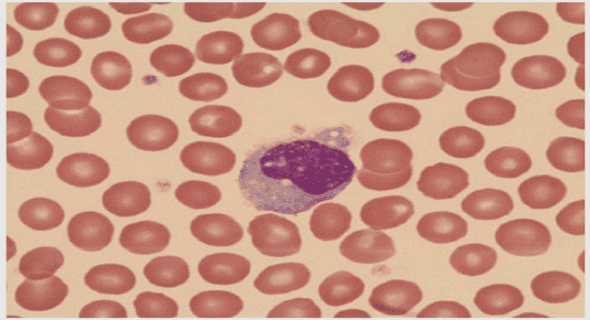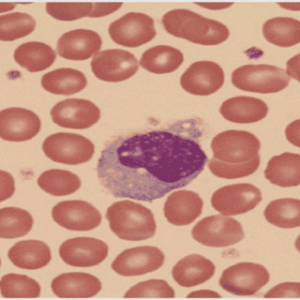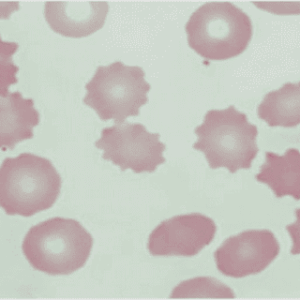(Downloads - 0)
For more info about our services contact : help@bestpfe.com
Table of contents
1 Introduction
1.1 Motivations
1.2 Contributions
2 Notes on Molecular Cell Biology
2.1 The Cell
2.1.1 Prokaryotes and Eukaryotes
2.1.2 E. coli as model organism
2.2 Gene expression: from DNA to Protein
2.2.1 Transcription: from gene to RNA
2.2.2 Translation: from RNA to protein
2.3 Regulation of Gene expression
2.3.1 Transcriptional control
2.3.2 Post-transcriptional control
2.4 Measurement Techniques
2.4.1 mRNA quantication
2.4.2 Protein quantication
2.4.3 Measurement limitations
3 Modelling Genetic Regulatory Network Systems
3.1 Boolean Models
3.1.1 Synchronous and Asynchronous networks
3.1.2 Graph theoretical representation
3.1.3 Example: Boolean bistable switch
3.2 Ordinary Dierential Equation (ODE) Models
3.2.1 Quasi-steady-state assumption of mRNA concentration
3.2.2 Example: ODE bistable switch
3.3 Piecewise Linear (PL) models
3.3.1 Dynamical study of PL systems
3.3.2 Solutions and Stability in Regular Domains
3.3.3 Solutions and Stability in Switching Domains
3.3.4 Example: PL bistable switch
3.4 Stochastic Models
3.4.1 The Chemical Master Equation (CME)
3.4.1.1 Stochastic simulation algorithm (SSA)
3.4.2 The chemical Langevin equation (CLE)
3.4.3 Example: CME and CLE bistable switch
3.5 Final comments
3.5.1 Deterministic Vs stochastic models
3.5.2 Quantitative Vs qualitative models
4 A Simple Model to Control Growth Rate of Synthetic E. coli during the Exponential Phase: Model Analysis and Parameter Estimation
4.1 Introduction
4.2 The Open-loop Model
4.2.1 Growth rate
4.2.2 cAMP-CRP activation
4.2.3 CRP synthesis
4.2.4 CGEM synthesis
4.2.5 Proteins removal
4.3 Qualitative Analysis of the Open-loop Model
4.3.1 Open-loop model in glucose growth
4.4 Growth rate expression for exponential phase
4.5 In silico Identiability Analysis of Growth Rate
4.5.1 Problem Statement
4.5.2 Generation of Simulated Data Sets
4.5.3 Model Parametrization and Global Optimization
4.5.4 In Silico Practical Identiability Analysis
4.6 Conclusions
5 Controlling bacterial growth: in silico feedback law design to re-wire the genetic network
5.1 Introduction
5.2 Piecewise linear models with dilution
5.2.1 Solutions in Regular Domains
5.2.2 Solutions in Switching Domains
5.2.3 Equilibria and Stability in Regular Domains
5.2.4 Equilibria and Stability in Switching Domains
5.3 Introduction to the control problem
5.4 Open-loop model
5.4.1 Growth rate
5.4.2 cAMP-CRP activation
5.4.3 CRP synthesis
5.4.4 RNAP synthesis
5.4.5 CRP and RNAP removal
5.5 Qualitative analysis of the open-loop system
5.5.1 Open-loop system in glucose growth
5.5.2 Open-loop system under an alternative carbon source
5.6 Closed-loop model
5.7 Qualitative analysis of the closed-loop system
5.7.1 Closed-loop system in glucose growth
5.7.2 Closed-loop system in maltose growth
5.8 Inverse Diauxie
5.9 Conclusions
6 Switched piecewise quadratic models of biological networks: application to control of bacterial growth
6.1 Introduction
6.2 Piecewise Linear systems overview
6.3 The growth rate model
6.4 The Switched Piecewise Quadratic (SPQ) system
6.5 The PQ subsystem: dynamical study
6.5.1 Solutions and Stability in Regular Domains
6.5.2 Solutions and Stability in Threshold Domains
6.6 Stability Analysis of the SPQ system
6.7 Open loop control of the RNAP-ribosomes system
6.7.1 SPQ model of the open-loop control system
6.8 Conclusion
7 Attractor computation using interconnected Boolean networks: testing growth models in E. Coli
7.1 Introduction
7.2 Methodology
7.2.1 From discrete to Boolean models
7.2.2 Dynamics of Boolean models
7.2.3 Interconnection of Boolean models
Transition graphs and semi-attractors
The asymptotic graph
7.2.4 Attractors of an interconnection
7.3 Application: a model for E. Coli growth mechanism
7.3.1 E. Coli nutritional stress response module
7.3.2 The cellular growth module
7.3.3 System interconnection
7.4 Results
7.4.1 General properties
7.4.2 Growth Rate limited by ribosomes or RNA polymerase
7.4.3 Growth Rate limited by bulk proteins
7.4.4 Model discrimination
7.4.5 Dynamical behaviour
7.5 Conclusions
8 A coarse-grained dynamical model of E. coli gene expression machinery at varying growth rates
8.1 Introduction
8.2 E. coli GEM network: biological description
8.2.1 Ribosomes synthesis and function
8.2.2 RNAP synthesis and function
8.2.3 Proteins synthesis and function
8.3 Mathematical background
8.3.1 Transcription
8.3.2 Translation
8.3.2.1 Translation of nascent mRNA
8.3.2.2 Translation of completed mRNA
8.3.2.3 Comments on ribosome engaged in translation
8.3.3 Final conclusions
8.4 E. coli GEM dynamical model
8.4.1 rnn gene expression model
8.4.2 rpoBC gene expression model
8.4.3 bulk gene expression model
8.4.4 Complete dynamical model of E. coli GEM
8.5 Model calibration
8.5.1 Experimental data
8.5.2 Parameters taken from literature
8.5.3 Calculated growth-rate-dependent parameters
Average DNA per cell:
Individual gene copy number per cell:
8.5.3.1 Promoter concentration of rnn operon
8.5.3.2 Promoter concentration of rpoBC genes
8.5.3.3 Promoter concentration of bulk genes
8.5.3.4 Promoter concentration of non-specic binding sites
8.5.4 Estimated parameters
8.6 Free RNAP and Free ribosomes
8.7 Model reduction
8.8 Conclusions
9 State estimation for gene networks with intrinsic and extrinsic noise: A case study on E.coli arabinose uptake dynamics
9.1 Introduction
9.2 Stochastic modelling of genetic networks
9.3 Case study: E.coli arabinose uptake dynamics
9.4 Gene network state estimation
9.4.1 The Square-Root Unscented Kalman Filter
Prediction
Measurement update
SRUKF Initialization
9.5 State estimation: Simulation results for the E.coli arabinose uptake system189
9.5.1 Comparison of SRUKF and PF
9.5.2 Performance of the SRUKF in presence of extrinsic noise
9.6 Conclusions
10 Conclusions and Perspectives
10.1 Qualitative models
10.2 Qualitative control strategies
10.3 Quantitative models
10.4 Parameter estimation
10.5 Stochastic models and state estimation
10.6 Perspectives
10.6.1 Qualitative control: application to real data
10.6.2 Identiability, sensitivity analysis and validation of GEM model
10.6.3 Combining qualitative and quantitative formalisms for control purposes
10.6.4 Further investigation of dynamical growth rate models
10.6.5 Filtering applications of GRN models
A List of Publications
Bibliography



